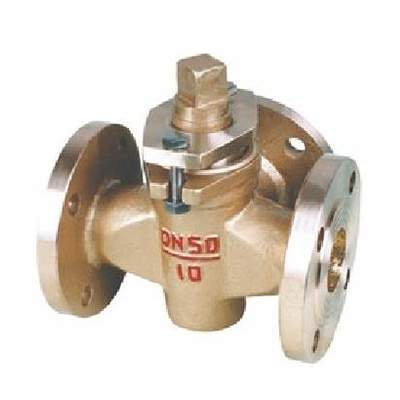Welcome to My Blog!
Before we dive into the content, if you’re interested in our products or have any questions, please feel free to visit our Contact Us page on the website. Our team is ready to assist you with inquiries, orders, or any support you may need.
Now, let’s get started on our journey together. I hope you find the content here insightful, engaging, and valuable.
Plug valves are among the most reliable and versatile valve types used in industrial piping systems. Known for their simple design and quick operation, they are widely used in industries such as oil and gas, chemical processing, water treatment, and general manufacturing.
This article provides a complete overview of plug valves — how they work, their major advantages and disadvantages, and how to choose the right type for your application.
What Is a Plug Valve and How Does It Work?

A plug valve is a type of quarter-turn valve that uses a cylindrical or conically tapered plug to control the flow of fluid. The plug has one or more hollow passageways (ports) that allow flow when aligned with the pipeline.
When the handle or actuator rotates the plug 90 degrees, the flow path is blocked, providing an efficient on–off function.
Main Components of a Plug Valve include:
- Body: The main pressure boundary that holds the plug and seats.
- Plug: The rotating element that opens or closes the passage.
- Stem: Connects the plug to the handle or actuator.
- Seats: Provide sealing between the plug and valve body to prevent leakage.
The simplicity of this design makes plug valves easy to operate, even under harsh service conditions.
Common Types of Plug Valves
Different plug valve designs exist to suit various industrial needs:
- Lubricated Plug Valve: Uses sealant or grease to reduce friction between the plug and body. Ideal for high-pressure or corrosive services.
- Non-Lubricated Plug Valve: Uses sleeve or lining materials like PTFE to provide a seal, eliminating the need for lubrication.
- Eccentric Plug Valve: The plug moves slightly off-center during operation, minimizing wear and providing tight shutoff — common in wastewater applications.
- Expanding Plug Valve: Features a double-seal mechanism for zero leakage, typically used in high-pressure pipelines.
- Multi-Port Plug Valve: Allows fluid to be diverted in multiple directions, useful in complex flow systems.
Key Advantages of Plug Valves
Plug valves are preferred for several reasons that make them stand out among other valve types:
- Simple Design and Compact Structure – Fewer parts mean easy assembly and maintenance.
- Quick Operation – Only a quarter-turn (90°) is required to open or close the valve completely.
- Excellent Sealing Performance – Tight shutoff minimizes leakage, making them suitable for gas and chemical service.
- Wide Range of Applications – Can handle high pressure, temperature, and various fluids, including slurries and viscous media.
- Low Maintenance Requirements – Minimal internal components reduce wear and the need for frequent servicing.
- Versatility in Flow Direction – Multi-port options enable flexible pipeline configurations.
Common Disadvantages of Plug Valves
Despite their many advantages, plug valves have some limitations:
- High Operating Torque – Larger valves require more force or gear operators to turn.
- Lubrication Needs – Lubricated plug valves require periodic injection of sealant to maintain smooth operation.
- Risk of Plug Jamming – Debris or improper maintenance may cause the plug to seize inside the body.
- Heavier Weight – Compared to butterfly or ball valves, plug valves are generally heavier.
- Limited Throttling Capability – Not ideal for precise flow control; best suited for isolation or diversion.
Understanding these drawbacks helps users choose the right valve for their system.
Plug Valve vs Ball Valve — What’s the Real Difference?
Although plug valves and ball valves are both quarter-turn designs, they differ in structure and performance:
| Feature | Plug Valve | Ball Valve |
|---|---|---|
| Sealing Mechanism | Tapered plug and body contact | Spherical ball and soft seats |
| Flow Control | Moderate; not ideal for throttling | Excellent for full bore flow |
| Maintenance | Easier disassembly and cleaning | More complex seat replacement |
| Applications | High-pressure, high-temperature, or abrasive fluids | Clean or general-purpose media |
In short, plug valves offer superior durability and sealing under tough conditions, while ball valves are more common in standard fluid applications.
Typical Applications of Plug Valves
Plug valves are widely used across many industries due to their adaptability:
- Oil & Gas Pipelines: For on–off control in transmission lines.
- Chemical and Petrochemical Plants: Handling corrosive or high-temperature fluids.
- Water and Wastewater Systems: Especially eccentric plug valves for sludge and slurry.
- HVAC Systems: Used for flow switching and isolation.
- Power Plants and Mining: Where reliable sealing is crucial.
Their ability to operate in extreme environments makes them a versatile choice for engineers and plant operators.
Maintenance and Troubleshooting Tips
Regular maintenance extends the lifespan of plug valves. Here are key recommendations:
- Lubricate Periodically: For lubricated designs, apply sealant to prevent corrosion and reduce friction.
- Check for Leakage: Inspect seats and seals during routine shutdowns.
- Prevent Plug Sticking: Flush the system to remove debris before operating.
- Replace Worn Parts: Seals and bushings should be replaced at the first sign of leakage.
A proactive maintenance plan reduces downtime and ensures long-term performance.
Materials, Standards, and Certifications
Plug valves come in a variety of materials depending on the fluid and operating conditions:
- Body Materials: Cast iron, carbon steel, stainless steel, ductile iron, or bronze.
- Lining Options: PTFE, PFA, or other corrosion-resistant coatings.
- Common Standards:
- API 6D – Pipeline valves for petroleum and natural gas industries.
- ISO 5208 – Pressure testing standards.
- ASME B16.34 – Valves for pressure–temperature ratings.
- Certifications: Fire-safe and anti-static designs for hazardous applications.
How to Choose the Right Plug Valve for Your Application

Selecting the correct plug valve depends on several key factors:
- Operating Conditions: Pressure, temperature, and fluid type.
- Material Compatibility: Ensure corrosion and chemical resistance.
- Port Configuration: Two-way or multi-port designs for flow diversion.
- End Connections: Flanged, threaded, or welded ends based on pipeline design.
- Actuation Type: Manual, gear-operated, or automated actuator.
- Cost vs Performance: Balance initial investment with long-term maintenance savings.
When in doubt, consult with a valve specialist or manufacturer for a customized solution.
Summary
Plug valves offer excellent sealing, fast operation, and reliable performance in challenging industrial environments. They excel in high-pressure, high-temperature, and corrosive services, making them ideal for oil, gas, and chemical applications.
However, their higher torque requirements and limited throttling ability mean they’re not perfect for every situation.
FAQ
What is a plug valve used for?
A plug valve is used to start or stop the flow of liquids or gases in a pipeline. It’s ideal for quick shutoff in high-pressure and high-temperature systems.
What are the main advantages of a plug valve?
Plug valves offer simple design, tight sealing, and quick operation. They are easy to maintain and suitable for handling a wide range of fluids, including corrosive or viscous ones.
What is the difference between a plug valve and a ball valve?
A plug valve uses a cylindrical or tapered plug, while a ball valve uses a spherical ball. Plug valves handle abrasive or dirty fluids better, whereas ball valves are preferred for clean services.
Can plug valves be used for throttling?
Although plug valves can slightly regulate flow, they are mainly designed for on–off applications rather than precise throttling control.
How do you maintain a plug valve?
Regular lubrication (for lubricated types), cleaning, and inspection of seats and seals help prevent leakage and extend the valve’s lifespan.
Need Help Choosing the Right Plug Valve?
If you’re unsure which plug valve is best suited for your application, our valve experts are ready to assist. Contact us today for a personalized consultation and discover the most efficient, durable, and cost-effective solution for your system. Don’t leave performance to chance—get in touch now to optimize your flow control and protect your operation!
